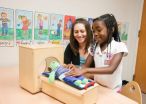(Press-News.org) A catastrophic event – such as a terrorist attack, a natural disaster, or market collapse – often strikes twice. There is the damage caused by the event itself, as lives are lost or left in ruin. But there is also the second act, catalyzed by our response to the catastrophic event. This second act has the potential to cause just as much damage as the first.
In the year following the terrorist attacks of September 11, 2001, there were approximately 1,600 more traffic fatalities in the United States than expected. This figure suggests the possibility that fear may have been a strong motivator for many people, leading them to choose driving over flying. This change in behavior, motivated by fear, may have ultimately led to additional deaths through traffic fatalities.
But fear does not tell the whole story. As Wolfgang Gaissmaier and Gerd Gigerenzer of the Harding Center for Risk Literacy at the Max Planck Institute for Human Development in Berlin, Germany, observe, the changes in driving behavior observed after 9/11 varied widely across different regions of the United States and did not just occur in those states closest to the attacks where fear was presumably strongest.
Gaissmaier and Gigerenzer hypothesized that another factor might have played a central role: driving opportunity. While fear provides a motivational explanation, in order for people to substitute driving for flying there had to be an environmental structure that allowed fear to manifest in a behavior change.
The researchers explore this hypothesis in a new research article to be published in Psychological Science, a journal of the Association for Psychological Science.
They collected data on the number of miles driven and the number of traffic fatalities per month from each of the 50 states and the District of Columbia. They also gathered data on fear and driving opportunity. They used proximity to New York City to get an approximate measure of post-9/11 fear, as previous research had shown that proximity was linked with substantial stress reactions after the attacks. To measure driving opportunity, they assessed the length of nationally significant highways in each state in the National Highway System, divided by the number of state inhabitants and they also looked at the number of car registrations per inhabitant.
The results of the analyses show that people did in fact drive more following 9/11: Across all states, the average monthly increase in miles driven per inhabitant was 27.2 miles in the three months following the attacks. This increase was significantly greater than that observed in the same three-month period in the five years leading up to 2001.
Interestingly, people who were closer to New York City showed only a slight increase in driving. Increase in miles driven was strongly associated, however, with greater driving opportunity. Most importantly, increased driving was associated with an increase in traffic fatalities. These findings suggest that fear can lead people to engage in potentially dangerous behaviors, such as increased driving, but that understanding fear is not enough.
"To be able to foresee where the secondary effects of catastrophic events could have fatal consequences, we need to look at the environmental structures that allow fear to actually manifest in dangerous behaviors."
According to Gaissmaier, understanding citizens' behavior as a function of both the mind and the environment ultimately allows for two routes toward behavior change: altering people's minds (through education or awareness campaigns) or altering people's environments.
###
For more information about this study, please contact: Wolfgang Gaissmaier at gaissmaier@mpib-berlin.mpg.de.
The APS journal Psychological Science is the highest ranked empirical journal in psychology. For a copy of the article "9/11, Act II: A Fine-grained Analysis of Regional Variations in Traffic Fatalities in the Aftermath of the Terrorist Attacks" and access to other Psychological Science research findings, please contact Anna Mikulak at 202-293-9300 or amikulak@psychologicalscience.org.
Fear and driving opportunity motivated changes in driving behavior after 9/11
2012-08-31
ELSE PRESS RELEASES FROM THIS DATE:
Research yields two 'firsts' regarding protein crucial to human cardiac function
2012-08-31
TALLAHASSEE, Fla. -- Florida State University researchers led by physics doctoral student Campion Loong have achieved significant benchmarks in a study of the human cardiac protein alpha-tropomyosin, which is an essential, molecular-level component that controls the heart's contraction on every beat.
Using an imaging method called atomic force microscopy, Loong achieved two "firsts": the first direct imaging of individual alpha-tropomyosin molecules, which are very small — roughly 40 nanometers long — and the first demonstrated examples of a measure of the human cardiac ...
BUSM researchers study use of MRI in osteoarthritis
2012-08-31
(Boston) – A study conducted by researchers at Boston University School of Medicine (BUSM) shows that magnetic resonance imaging (MRI) detected a high prevalence of abnormalities associated with knee osteoarthritis in middle-aged and elderly patients that had no evidence of knee osteoarthritis in X-ray images.
Ali Guermazi, MD, PhD, professor of radiology at BUSM and chief of Musculoskeletal Imaging at Boston Medical Center (BMC), led this study in collaboration with researchers from Lund University in Sweden, Brigham and Women's Hospital in Boston and Klinikum Augsburg ...
BUSM researchers find potential key to halt progression, reverse damage from emphysema
2012-08-31
(Boston) – A study led by researchers at Boston University School of Medicine (BUSM) has shown that a compound used in some skin creams may halt the progression of emphysema and reverse some of the damage caused by the disease. When the compound Gly-His-Lys (GHK) was applied to lung cells from patients with emphysema, normal gene activity in altered cells was restored and damaged aspects of cellular function were repaired.
The study, which is published in BioMed Central's open access journal Genome Medicine, also demonstrates the potential impact of using genomic technologies ...
Mobile apps for diabetes present usability issues for older adults
2012-08-31
Diabetes is prevalent among adults aged 65 and older and can lead to a number of other serious health issues. Maintaining control of blood glucose levels is one of the most important actions diabetics can take to control their illness. New technology is designed to make self-monitoring easier and more accessible than ever before, but often tech products fail to accommodate some older users. Human factors/ergonomics researchers Laura A. Whitlock and Anne Collins McLaughlin evaluated the usability issues that older adults may experience with one type of emerging technology, ...
Wayne State researchers say adolescent smoking prevention programs still critical
2012-08-31
DETROIT — While many might see the case for programs to prevent adolescent cigarette smoking as already made, a pair of Wayne State University researchers believes that due to increasingly challenging economic times, policymakers need to be reminded to continue allocating funding for such programs.
Xinguang Chen, M.D., Ph.D., professor of pediatrics in the School of Medicine, and Feng Lin, Ph.D., professor of electrical and computer engineering in the College of Engineering, have found a way to provide policymakers with some hard evidence.
Most adult smokers in the ...
AGU journal highlights -- 31 August 2012
2012-08-31
The following highlights summarize research papers that have been recently
published in Geophysical Research Letters (GRL), Journal of Geophysical
Research - Biogeosciences (JGR-G), Journal of Geophysical Research -
Atmospheres (JGR-D), Water Resources Research (WRR), and Space Weather
(SW).
In this release:
1. Trade-offs between water for food and for curbing climate change
2. Low calcification in corals in the Great Barrier Reef
3. The Everglades still threatened by excess nutrients
4. Wetlands the primary source of Amazon Basin methane
5. Old fractures ...
Cleveland Clinic researchers investigating potential drug for treatment of Alzheimer's disease
2012-08-31
Friday, Aug. 31, 2012, Cleveland: A compound developed to treat neuropathic pain has shown potential as an innovative treatment for Alzheimer's disease, according to a study by researchers at Cleveland Clinic's Lerner Research Institute and Anesthesiology Institute.
"Cleveland Clinic dedicated two years of research into the examination of this compound and our findings show it could represent a novel therapeutic target in the treatment of Alzheimer's disease," said Mohamed Naguib, M.D., Professor of Anesthesiology, Cleveland Clinic Lerner College of Medicine. "Development ...
International collaboration key to science and engineering globalization
2012-08-31
International collaboration is a key aspect of the globalization of science and engineering. A recent report and data evaluation released by the National Science Foundation (NSF) showed that one in six scientists and engineers in the United States reported working with individuals in other countries in a given week. International collaboration was more likely to occur among persons working in the for-profit sector, men, and those with higher levels of educational attainment. Individuals who earned postsecondary degrees both in the United States and abroad reported the highest ...
Customer service is an emotional experience
2012-08-31
Los Angeles, (August 31, 2012) You can probably recall a customer service experience that left you feeling good. A recent study has shown not only that positive emotion from sales staff is contagious to a customer, but that a satisfied customer also improves the salesperson's mood. This research is now available in Human Relations, published by SAGE.
Sandra Kiffin-Petersen, and Geoffrey Soutar from University of Western Australia and Steven Murphy from Carlton University, Canada used a qualitative diary study with 276 sales employees to shed light on the sales experience ...
Intervention helps children with sickle cell disease complete MRI tests without sedation
2012-08-31
Sitting still is tough for children, which makes MRI scans a challenge. The scans require that patients remain motionless for extended periods. Findings from St. Jude Children's Research Hospital showed that a brief, targeted intervention dramatically increases the likelihood that children as young as 5 years old will be able to undergo testing without sedation.
That is good news for children with sickle cell disease, who were the focus of this study. Patients with sickle cell disease often undergo brain and liver MRIs to check for complications related to their disease ...


